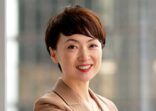“The sukuk uses a wakalah structure, with one-third of assets underpinned by selected units in an office building in Hong Kong, and the other two-thirds underpinned by shariah-compliant commodities, the government said in a statement.
“Compared with the ijarah structure of the inaugural sukuk, which requires underlying tangible assets of at least 100% of issuance amount, this latest structure allows the use of substantially less tangible assets,” said John Tsang, Hong Kong’s financial secretary.
“The use of the `asset light’ structure can set a benchmark for potential issuers in the private sector.”
A road show earlier this month in the Middle East, Asia and London attracted $2bn in orders, the government said.
Orders were received from 49 global institutional investors. By investor type, 77% was distributed to banks, private banks and fund managers, and 23% to sovereign wealth funds, central banks and supranationals.
By geography, 42% of the bond was distributed in the Middle East, 43% to Asia and 15% to Europe.
The product was priced at 35 basis points over 5-year US treasuries.
“Despite the volatility observed in the international bond market and the large movements of sovereign bond yields within a short period of time…the final pricing was set at the tight end of the initial price guidance,” the government said.
The sukuk has an issuance size of $1bn and a tenor of 5 years. It was assigned credit ratings of AAA by Standard and Poor’s and Aa1 by Moody’s, the government said.
The instrument is the second US dollar-denominated sukuk issued by the Hong Kong government. Late last year, it raised $1bn for its inaugural sukuk.
The government is trying to catalyse the growth of the sukuk market in Hong Kong by encouraging more issuers and investors to participate.
The total market for Islamic banking assets is estimated at $2trn.
Malaysia currently has the world’s largest sukuk market share.
















